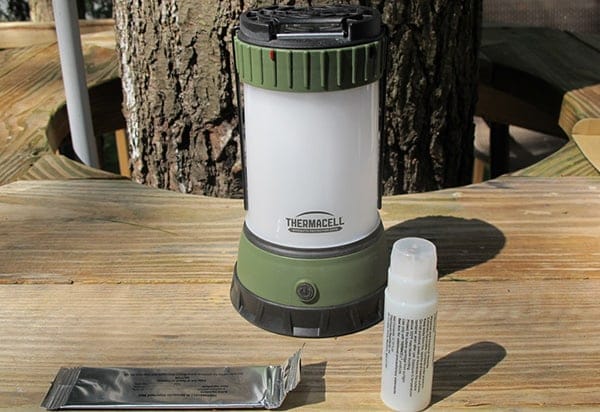Best Ways to Prevent Mosquito and Tick Bites
by PJ Delhomme
Ahhh, spring. The snow is melting, the days are longer, the flowers are blooming, and the bugs are out for blood. Unfortunately, you and your family are on the menu. Mosquitos, ticks, and their brethren are not just annoying, they’re dangerous. Ticks carry Lyme disease, which is a dreadful, rapidly spreading disease. The good news is that plenty of options are on the market to keep bugs out of your business.

Mosquitos, ticks, and their brethren are not just annoying, they’re dangerous.
The Best Spray Bug Repellents: DEET and Picaridin
N, N-Diethyl-3-methyl benzamide, or DEET for short, has been the sportsman’s go-to bug repellent since it was first on the market in 1957. Initially developed by the U.S. Army in 1946, DEET has earned a reputation for causing skin rashes. Still, when used as directed, the Centers for Disease Control says DEET is safe and effective, even for pregnant and breastfeeding women . The CDC adds that you should apply repellent after sunscreen. DEET products tend to be stinky and oily, but they are effective. I like Cutter Backwoods Dry with 25 percent DEET.
If you’re not a DEET fan, picaridin insect repellent is a great alternative. Sawyer Picaridin Insect Repellent comes in a pump bottle and contains 20 percent picaridin. Picaridin manufacturers claim that it’s more effective at repelling biting flies than DEET, and it’s also effective against ticks, mosquitoes, black flies, gnats, chiggers, and sand flies. Lasting up to 14 hours, it’s worth trying.
Use Permethrin on Clothes and Dogs
When camping in Tickville, USA, consider treating your gear and clothes with permethrin to provide another layer of protection. It’s odorless after drying and doesn’t stain. The treatment process is easy—just spray it on (again, your gear and clothes–not your skin). Wear gloves because to avoid direct skin contact. It’s fine on your clothes once it dries. Like picaridin, Sawyer makes permethrin. Their website says you can even apply it to dogs to control fleas and lice for a month and ticks for six weeks.
More Helpful Articles About Ticks
- 5 Ways to Prevent Ticks Bites + How to Remove Them
- Lyme Disease Facts & Myths
- Lyme Disease Symptoms – What to Watch For
A Natural Way to Repel Bugs: Oil of Lemon Eucalyptus
If you’re a fan of essential oils (and who isn’t), this section is for you. A few oils found in nature are known to repel bugs. The oil of lemon eucalyptus (OLE) is sourced from an Australian plant, and the EPA classifies it as a biopesticide, meaning it’s a naturally occurring substance. Even so, it should not be used on kids under three. Numerous companies, such as Cutter and Repel, offer products with OLE as the active ingredient.

Portable Gadgets for Repelling Bugs
As a kid, I loved sitting on the porch in the evening as my dad smoked a Camel cigarette, listening to the bug zapper work its electrifying magic. Mosquitoes kept a steady rhythm to the zaps, and I swear the porch lights flickered when a moth saw the light. Today, you can get that same childish satisfaction in a cordless option. If you want to have some real, wholesome fun, buy a couple electric fly swatters. For a more refined bug-repelling option, Thermacell makes products designed to create a defensive and invisible insect dome around you and your camp. You can read more about that here.

Thermacell makes products designed to create a defensive and invisible insect dome around you and your camp.
Being outdoors in spring and summer means you’re in bug territory, but you have plenty of options to fight back. Experiment and find out what works best in your neck of the woods. Don’t let those little buggers ruin a perfectly good day outside.
What kind of repellent do you need or want? Check out this handy search tool provided by the EPA.
PJ DelHomme writes and edits content from his home in western Montana. He runs Crazy Canyon Media and Crazy Canyon Journal.
More articles in our Be An Expert on the Water series!




